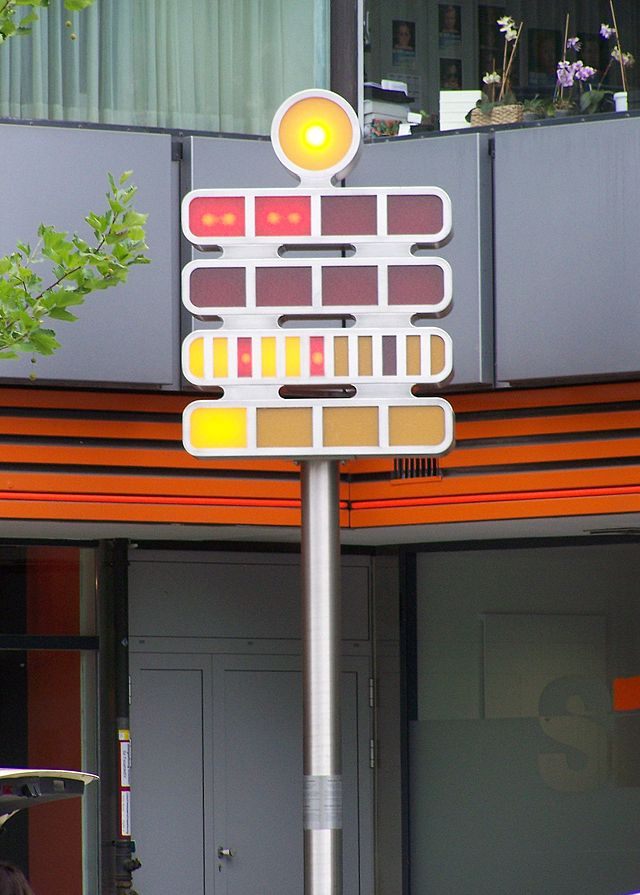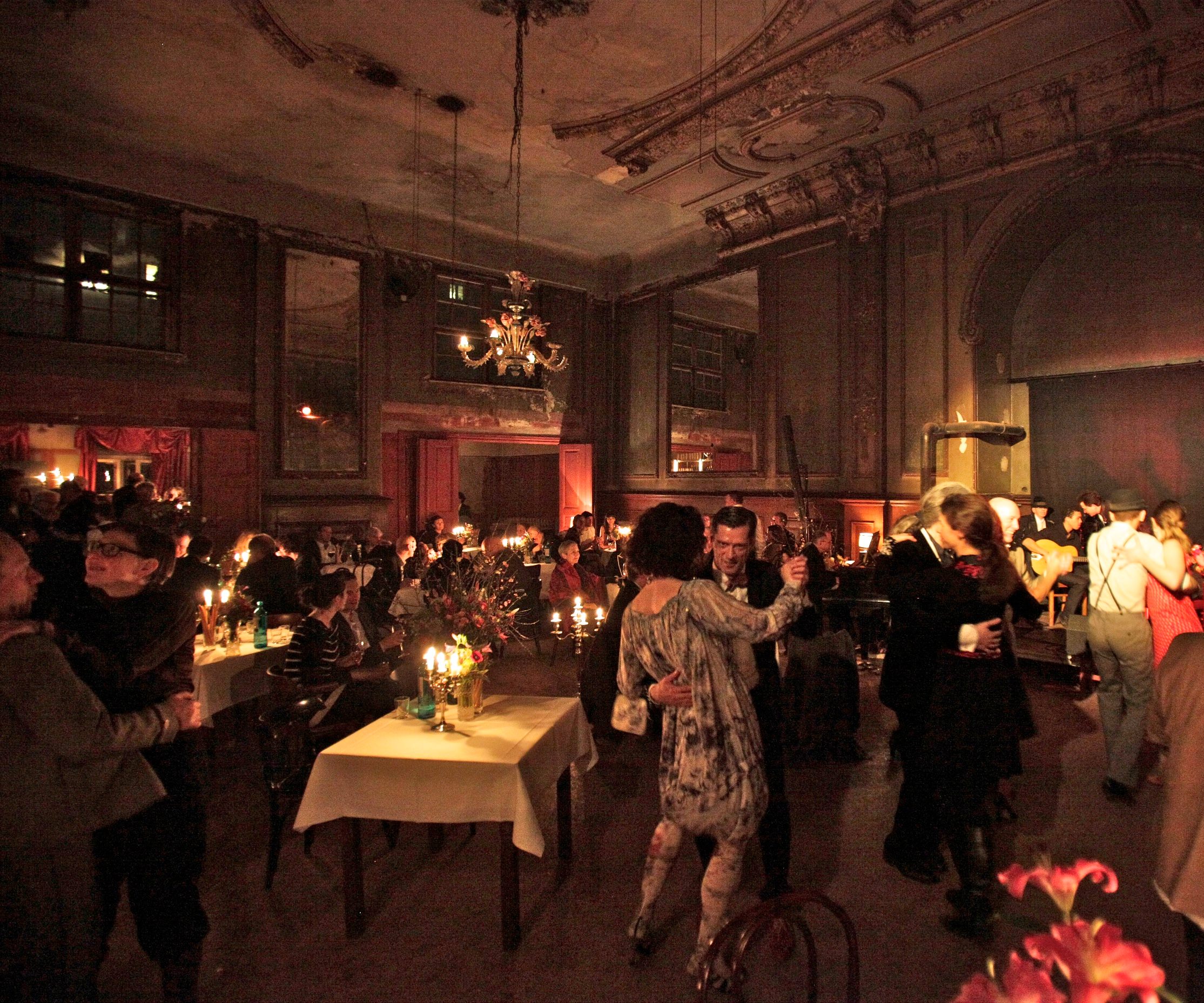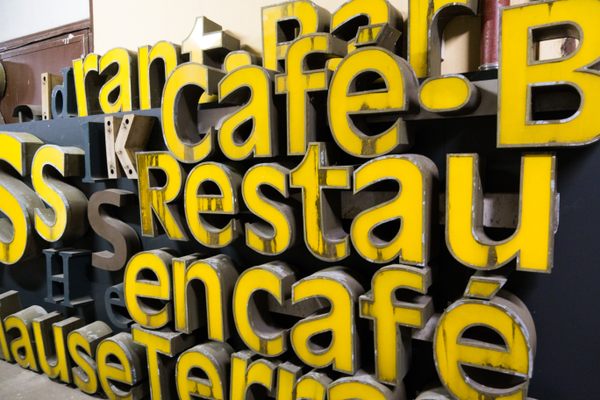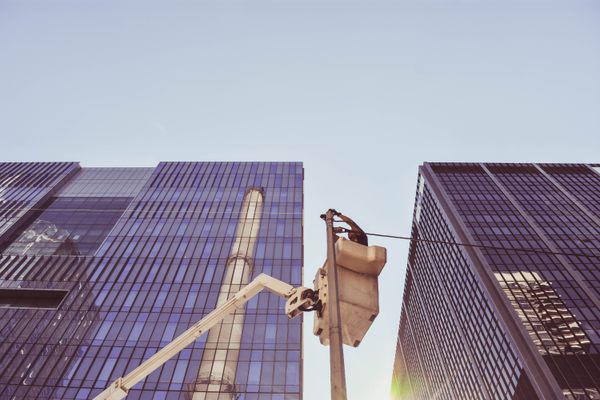12 Places that Prove Berlin is a Brilliant Wunderkammer
The German capital is equal parts fairytale, steam bath, and spy meet-up.
A vibrant cat rollercoaster at Spreepark, Berlin’s abandoned dinosaur theme park. (Photo: Norbert Löv/CC BY-SA 2.0)
The Germans have a brilliant word for a cabinet of curiosities: the wunderkammer. The word is so great that it has now been absorbed into the English vocabulary to describe an eclectic treasury or cabinet of wonders. In many ways, the city of Berlin itself is a wunderkammer: it boasts an extensive collection of weird, unusual and quirky places. Below, we’ve compiled our favorite spots in the German capital.
1. Buchstabenmuseum

The museum is a testament to both found art and recycling. (Photo: Courtesy of Buchstabenmuseum)
The Buchstabenmuseum, or Museum of Letters, Characters and Typefaces, serves as a testament to not only found art but also the German commitment to recycling; the museum saves old signs and individual neon letters from the garbage. It was established in 2005 by graphic designer Barbara Dechant and museum curator Anja Schulze. Since then, it has become a favorite among letterform enthusiasts around the world, but is fascinating even to those not familiar with the intricate world of typography.
2. Tieranatomisches Theater

The dome was built with an illuminating truss structure to let in light before electricity. (Photo: Matthias Heyde/HU Berlin/CC BY-SA 3.0)
The Tieranatomisches Theater was constructed in 1789 by Carl Gotthard Langhans, the same architect behind the city’s iconic Brandenburg Gate, making it the oldest surviving example of academic architecture in Berlin. In its heyday, it played host to several decades of animal dissections, under King Frederik William II, who thought the horses and cattle of the country needed a veterinary medicine school to study their diseases. Now visitors to exhibitions there can experience the classicist theater in all its 18th-century medical glory, without the grisly stench.
3. Mengenlehreuhr

The clock is made of 24 lights that blink in patterns that measure a 24-hour cycle–if you can crack the code. (Photo: Muritatis/Public Domain)
Mengenlehreuhr, or “set theory clock,” is thought to be the world’s first clock to measure time in colors and light. Designed like a retro-futuristic conversation piece, the timepiece was first installed in Berlin in 1975, commissioned by the Berlin senate and designed by inventor Dieter Binninger. It consists of 24 lights that blink on and off in patterns that measure a 24-hour cycle for those who can decipher the code.
4. Spreepark

Spreepark’s prominent Ferris Wheel, now overgrown. (Photo oysteinv/CC BY-SA 2.0)
Spreepark, a 1960s amusement park in southeastern Berlin, has been abandoned for the last 15 years, and looks like it. It was originally constructed by the communist government in East Germany, and intended to be a dinosaur themed amusement park. One of its managers also happened to be a drug dealer, who hid part of his cocaine stash in one of the rides. Due to his criminal activities and the park’s lack of visitors, Spreepark was closed in 2002. A recently installed green fence makes it nearly impossible to get inside, but the promenade around the park allows visitors to gaze upon the abandoned installations and speculate on the histories they hold.
5. The Bierpinsel

Today, the tower is covered in art by famous street artists such as Honest and Sozyone Gonzales. (Photo: A.Savin/CC BY-SA 3.0)
A tree-like building perches on its trunk in the Steglitz neighborhood of Berlin. Built in 1976 by architect couple Ursula and Ralph Schuler, the Bierpinsel (aka The Beer Brush) is an iconic example of the Brutalism craze. The building was originally equipped with a restaurant and a nightclub, but closed down several times and became a monument to Berlin’s sweet and sour urban decay. After renovations, the tower was reopened as “Turmkunst” in 2010 and decorated by famous street artists like Honest and Sozyone Gonzalez, giving it a fresh pop-art makeover.
6. Teufelsberg

Some of the radomes of the former NSA listening station atop an artificial hill in the Grunewald forest. (Photo: Jochen Teufel/CC BY-SA 3.0)
Teufelsberg, an abandoned NSA field station, is perched atop an 80-meter artificial hill in the city’s Grunewald forest. The hill itself has a noteworthy history: created from the post-World War II debris of Berlin, it is higher than the city’s highest natural hill. A Nazi military-technical college is still buried deep within it. For a time the hill served as a ski-hill, before it was re-purposed by as a “listening station” by the U.S. National Security Agency. Independent visits to Teufelsberg should be undertaken with caution as there are potentially dangerous openings, but guided tours are available on Sundays.
7. Bridge of Spies

The Bridge of Spies was once a clandestine meeting place for exchanging captured Cold War spies. (Photo: Gary Blakeley/CC BY 3.0)
During the Cold War, bridges were often go-to venues for prisoner exchanges and covert rendezvous. The Glienecke Bridge, better known as the “Bridge of Spies,” was perhaps the most famous of them all. Originally built in 1907, the bridge connects the Wannsee district of Berlin with the city of Potsdam. During the height of the Cold War, the bridge was a restricted border crossing between East and West Berlin, and it became a spot for exchanging captured spies. Between 1962 and 1986, nearly 40 people were passed across the bridge between Eastern and Western agents. These days it might be more recognizable as the namesake for the 2015 Steven Spielberg film, but you can still spy remnants of the bridge’s former border line, as you clandestinely sneak across.
8. Spiegelsaal in Clarchens Ballhaus

The Spiegelsaal has been a glamorous party locale for more than a century. (Photo: Bernd Schoenberger/Spiegelsaal)
Tucked within the side wing of the Clärchens Ballhaus is a glittering mirrored ballroom, the Spiegelsaal, that captures the spirit of Germany’s Wilhelmine and Golden Twenties era. The dancing venue, which is outfitted in chandeliers and decorative stucco, was established in 1913 alongside the better-known music hall, and a bowling alley. But the Hall of Mirrors was badly damaged in WWII, and remained closed for half a century. Finally in 2005 the mirrored ballroom was repaired and reopened to the public, and it’s now a venue for elegant soirées and musical performances.
9. Design Panoptikum

The only way to figure out what all these things are is to visit for yourself and ask the Panoptikum’s owner. (Photo: Anagoria/CC BY 3.0)
The Design Panoptikum, a surreal museum of industrial objects, is part cabinet of curiosities, part horror house. It describes itself as having a “space carnival atmosphere,” and is filled with eerie spare parts, odd mechanical contraptions, rare furniture, and perplexing illustrations. The objects can be loosely traced to the fields of aviation, medicine, film, and more―is the Panoptikum an alien incubator or soft torture chamber? If you’re lucky, the owner will give you a personal tour.
10. Pfaueninsel

This fairytale island of wild peacocks is just a ferry ride away from the city. (Photo: NoRud/CC BY-SA 3.0)
Wild peacocks roam this empty white fairytale castle sitting along the River Havel. At Pfaueninsel, or Peacock Island, you’ll find the peacocks wandering the island’s 243 acres of abundant greenery and abandoned buildings. Originally known as “Rabbit Island” thanks to a small rabbit farm established there in the 17th century, Pfaueninsel was later turned into a plant and animal refuge by Frederick William II, who also constructed the castle, its two towers connected by a bridge. His son gathered a menagerie of exotic animals, which later migrated to the Berlin Zoo―except for the peacocks. Those remained. Today the island can still be visited via ferry.
11. Hansa Studios

The Meistersaal, a former chamber music concert hall, became Studio Two at Berlin’s Hansa Studios. (Photo: In3s/CC BY-SA 3.0)
If you want to walk through spaces once pulsing with the energy and acoustics of singers like David Bowie and Iggy Pop, make a visit to Hansa Studios, which bore witness to a number of modern music’s most seminal works. The recording studio is located in a former builders’ guild hall originally built in 1913, which served as a chamber music concert hall, cabaret, and cultural hub for artists and writers in the Weimar era. In the 1970s, the building was turned into Hansa Studios, and the neoclassical Meistersaal, a 1910 chamber music concert hall with a polished floor and coffered ceiling, became Studio Two. As you wander through on an official tour, try closing your eyes and imagining Bowie recording Heroes and Iggy Pop trumpeting Lust For Life in Hansa’s regal setting.
12. Liquidrom

Time for the ultimate moonlit, musical hydration relaxation. (Photo: Liquidrom)
If you’re hunting for a unique spa experience with sci-fi undertones, look no further. From the outside, the Liquidrom, part of the city’s Tempodrom complex, resembles an abstract circus tent structure, a design choice meant to honor the site’s former life as a train station. Inside, the Liquidrom is home to a Himalayan salt sauna, a Finnish steambath, and its centerpiece, a warm salt water floating pool 13 meters in diameter where you can relax as techno or classical music flows around you. You can even hear it underwater.












Follow us on Twitter to get the latest on the world's hidden wonders.
Like us on Facebook to get the latest on the world's hidden wonders.
Follow us on Twitter Like us on Facebook